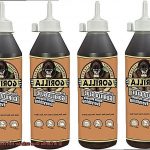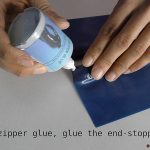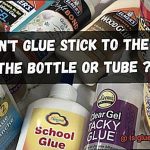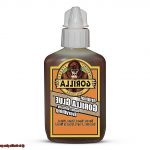Today, we’re diving headfirst into the captivating world of miniature modeling, where every delicate brushstroke and precise glue dot has the power to breathe life into a tiny universe.
Speaking of glue, one name that often pops up in our quest for the perfect adhesive is none other than Gorilla Glue – a heavyweight in the realm of bonding agents.
But is it truly the superhero our miniatures crave, or does it come with a few sticky traps of its own? Join me on this adventure as we explore the pros and cons of using Gorilla Glue for our pint-sized masterpieces.
Is Gorilla Glue good for miniatures?
Contents
- 1 Is Gorilla Glue good for miniatures?
- 2 What is Gorilla Glue?
- 3 Potential Problems with Gorilla Glue on Miniatures
- 4 Foaming Action of Gorilla Glue
- 5 Strength of Bond Created by Gorilla Glue
- 6 Compatibility Issues with Materials Used for Miniatures
- 7 Benefits of Using Gorilla Glue on Miniatures
- 8 Alternatives to Gorilla Glue for Miniature Crafting
- 9 Final Considerations
- 10 Conclusion
Pros:
Gorilla Glue lives up to its mighty moniker by offering unparalleled strength and durability. Its impressive bonding capabilities make it an ideal choice for various materials commonly used in miniature crafting, including plastic, metal, wood, and even resin. With Gorilla Glue by your side, you won’t need to clutter your workspace with multiple types of glue – it’s a versatile adhesive that can handle all your projects like a boss.

Another standout feature of Gorilla Glue is its water-resistant properties. This comes in handy if you plan on displaying your miniatures in dioramas or outdoor settings. No more worries about your painstakingly glued creations melting away under a little humidity or getting washed away by an unexpected downpour.
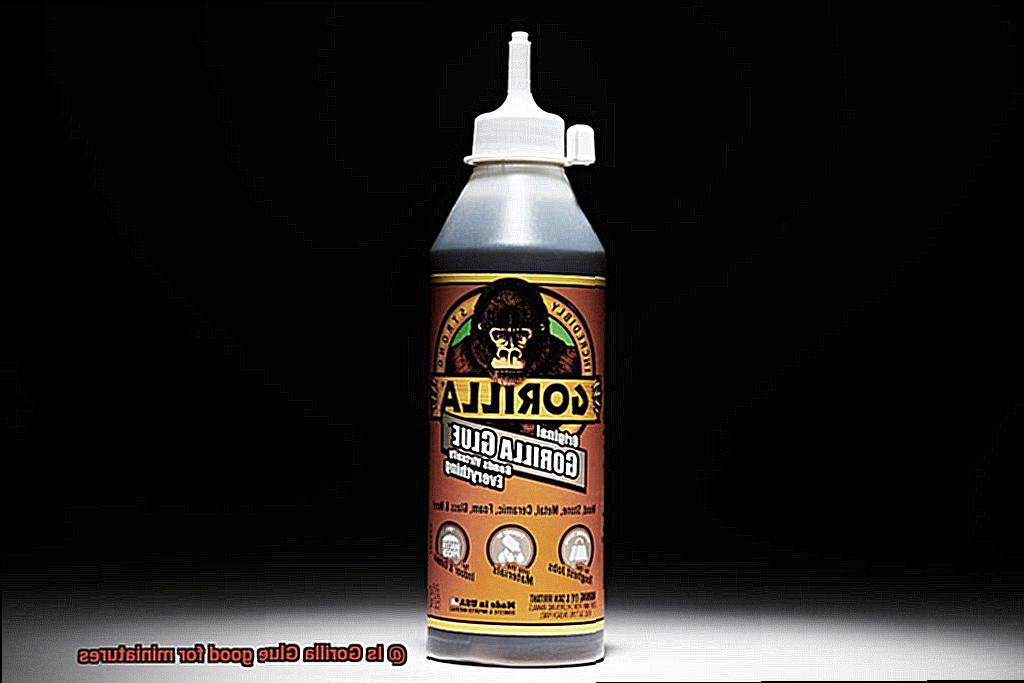
Cons:
Like any adhesive worth its weight in gold (or should I say glue?), Gorilla Glue does have a few quirks worth mentioning. One characteristic that devoted fans are well aware of is its tendency to foam up during application. While this can be advantageous for filling gaps and strengthening bonds, it also means you need to exercise caution when using it. Too much glue might result in unsightly foam oozing out – not exactly the look you’re going for, and it can be a bit of a sticky situation to clean up (pun intended).
Furthermore, Gorilla Glue requires moisture to activate and expand. This means that if you’re working with porous materials like paper or fabric, achieving the desired bond strength might pose a challenge. For these delicate surfaces, it’s wise to explore alternative glues specifically designed for their needs.
In conclusion, whether Gorilla Glue is a miniature modeling marvel or a potential sticky dilemma depends on your specific requirements and the materials at hand. Its strength and water
What is Gorilla Glue?
Crafted from a polyurethane formula, this versatile adhesive comes in various forms, including liquid, gel, and tape, to cater to a diverse range of bonding needs.
One of Gorilla Glue’s most lauded attributes lies in its exceptional potency. It forges a bond so robust that it can withstand the weight of heavy loads and endure the harshest of conditions. Whether employed in construction projects, woodworking ventures, artisanal crafts, or DIY repairs, this adhesive prevails as a steadfast ally. As it cures, Gorilla Glue expands, ingeniously filling gaps and ensuring a tight and secure embrace between materials.
Moreover, Gorilla Glue demonstrates remarkable resistance to water. This attribute renders it an invaluable asset for both indoor and outdoor applications, as it remains impervious to the ravages of moisture while maintaining its adhesive prowess. Furthermore, when fully cured, this adhesive dries to a subtle light tan hue, allowing for effortless integration into aesthetic projects. Those seeking a harmonious finish may even choose to paint over the glue without compromising its efficacy.
Nonetheless, it is crucial to exercise caution when wielding the formidable might of Gorilla Glue. Misapplication or accidental contact with skin can pose challenges when attempting removal. Therefore, prudence should prevail during usage to ensure precise application and avoid any untoward complications.
Potential Problems with Gorilla Glue on Miniatures
Using Gorilla Glue on miniatures can lead to potential problems that can harm the overall quality of the model. Here are some issues that may arise when using this adhesive:
- Expansion: The expansion property of Gorilla Glue, which is beneficial for larger projects, can be detrimental to miniatures. Delicate and intricate details on miniatures can be distorted or damaged when the glue expands as it dries. This can ruin the appearance of the miniature.
- Foaming: Gorilla Glue tends to foam as it dries, making it difficult to control in small spaces common in miniature models. Miniatures often have tight crevices and narrow gaps that require precise application of glue. The foaming action of Gorilla Glue can result in excess glue seeping out or uneven bonding, affecting the overall quality of the miniature.
- Moisture Activation: Gorilla Glue requires moisture to cure properly. However, miniatures made from materials like plastic or resin are typically not porous and do not readily absorb moisture. As a result, the required moisture for Gorilla Glue to cure may not be effectively absorbed by these materials, leading to incomplete or weak bonds.
- Curing Time: Gorilla Glue has a long curing time, taking several hours to reach its maximum strength. This extended waiting period may not be practical for miniature models that require precise assembly. Additionally, holding small and delicate pieces in place securely during this curing time can be challenging.
- Difficulty of Reversal or Repair: The strong bond created by Gorilla Glue can make it difficult to reverse or repair any mistakes on miniatures. Disassembling a miniature or replacing components may require excessive force or damage the model due to the adhesive’s strong bond.
Foaming Action of Gorilla Glue
When it comes to working with miniatures, selecting the right adhesive is pivotal for a secure bond without compromising delicate intricacies. Gorilla Glue is renowned for its foaming action, a unique characteristic that can offer both advantages and disadvantages when applied to miniatures. In this article, we will delve into the captivating foaming action of Gorilla Glue, exploring its benefits, drawbacks, and expert tips to empower you in making informed decisions for your miniature endeavors.
Advantages of Foaming Action:
- Filling gaps and bonding uneven surfaces: As the Gorilla Glue cures, its expansion creates a foam-like structure that adeptly fills in gaps and irregularities between surfaces. This results in a robust bond that strengthens the overall structure.
- Enhanced structural integrity: The foam-like structure generated by Gorilla Glue’s foaming action provides additional reinforcement, making it an excellent choice for larger miniatures requiring extra support.
Disadvantages of Foaming Action:
- Distortion of delicate details: While the foam expansion can be advantageous in some scenarios, it poses a risk to intricate features such as finely-crafted facial expressions, intricate armor patterns, or minute accessories on miniatures. The expansion might inadvertently alter or damage these fragile elements.
- Excessive foaming: Over-application of Gorilla Glue can lead to unsightly blobs of foam around your miniature or even cause structural complications. Excessive foaming also makes it challenging to precisely control the glue application.
Best Practices for Using Gorilla Glue on Miniatures:
- Apply sparingly: To avoid excessive foaming and preserve fine details, use a precision applicator tool or a toothpick to apply a small amount of glue precisely where bonding or filling is necessary.
- Ensure clean surfaces: Thoroughly clean the surfaces to be glued together, eliminating any dust or debris that could compromise adhesion or interfere with the foaming action.
- Allow ample curing time: Gorilla Glue’s foaming action extends the drying time compared to other glues. Patience is key; allowing sufficient time for the glue to fully cure before handling the miniature will prevent accidental damage.
Strength of Bond Created by Gorilla Glue
The strength of the bond created by Gorilla Glue is nothing short of remarkable when it comes to bonding miniatures. Its adhesive properties and foaming action make it a game-changer in the world of miniature projects. Here’s what you need to know:
First and foremost, Gorilla Glue is known for its strong and durable bond. It can withstand high levels of stress and strain, making it the perfect choice for miniatures that may be subjected to frequent handling or potential damage. This adhesive means business.
But what sets Gorilla Glue apart is its unique expansion for gap filling. As it cures, it foams and expands, filling in gaps and creating a tight bond. This feature is particularly handy when working with irregular or uneven surfaces in miniature projects. No more worrying about those pesky gaps ruining the aesthetics of your creation.
However, caution must be exercised when dealing with small pieces. While the expansion can be beneficial, excessive application can cause distortion or damage to delicate or small pieces. So, use Gorilla Glue sparingly to avoid any mishaps.
It’s always a good idea to test the glue on a small area first before committing to the full application. This precaution allows you to identify any adverse reactions or potential damage early on, ensuring your masterpiece remains intact.
Lastly, consider the specific needs of your miniature project. Every creation is different, so think about factors such as weight, fragility, and intended use when deciding if Gorilla Glue is the right choice for you.
Compatibility Issues with Materials Used for Miniatures
When it comes to crafting miniatures, choosing the right adhesive is crucial. Gorilla Glue, known for its strength and versatility, may seem like a good option, but it can lead to compatibility issues with the materials commonly used in miniature crafting.
One major concern with Gorilla Glue is its expansion properties. As a polyurethane-based adhesive, it expands as it cures. While this might be beneficial in some applications, it can cause problems when working with delicate and intricate miniatures. The excess foam that forms during the curing process can seep out, creating unsightly bulges or gaps and undermining the meticulous details you’ve worked so hard to achieve.
Furthermore, Gorilla Glue’s foaming action can potentially damage certain materials commonly used in miniature crafting. For instance, if you’re using polystyrene or expanded polystyrene foam, the expanding foam from Gorilla Glue can warp or even dissolve the material. This poses a significant challenge when assembling terrain pieces or other structures made from foam-based materials.
Another factor to consider is the visibility of glue lines. Gorilla Glue, especially its original formula, tends to dry to a yellowish color. While this might not be an issue if the glue will be hidden or painted over, it can be a considerable aesthetic concern for transparent or light-colored miniatures. Glue lines that stand out detract from the overall appearance of the piece and compromise its visual appeal.
Furthermore, Gorilla Glue’s strong bond makes future repairs or modifications difficult. Miniature enthusiasts often enjoy repainting or customizing their creations over time. However, removing components bonded with Gorilla Glue can be challenging and carries a high risk of damaging the miniature itself. This lack of flexibility limits your ability to make changes or improvements to your miniatures in the long run.
Benefits of Using Gorilla Glue on Miniatures
It provides numerous benefits that make it an ideal choice for miniature projects.
One of the key advantages of using Gorilla Glue on miniatures is its versatility. It can be used on a wide range of materials commonly found in miniature models, such as plastic, metal, resin, and even some types of wood. This versatility makes it a convenient option for hobbyists who work with different types of miniatures or need to repair various parts.
The expanding properties of Gorilla Glue are another standout feature. As it cures, the glue expands slightly, filling in gaps and ensuring a strong bond. This is particularly useful when assembling or repairing miniatures with intricate or irregularly shaped parts. The expanding nature of the glue helps create a more secure connection between the pieces, minimizing the risk of breakage or detachment.
Gorilla Glue is highly resistant to water and moisture, offering excellent protection for miniatures. Miniatures are often exposed to different environmental conditions, including humidity or accidental spills. The water-resistant properties of Gorilla Glue ensure that the miniatures remain intact and unaffected by water exposure.
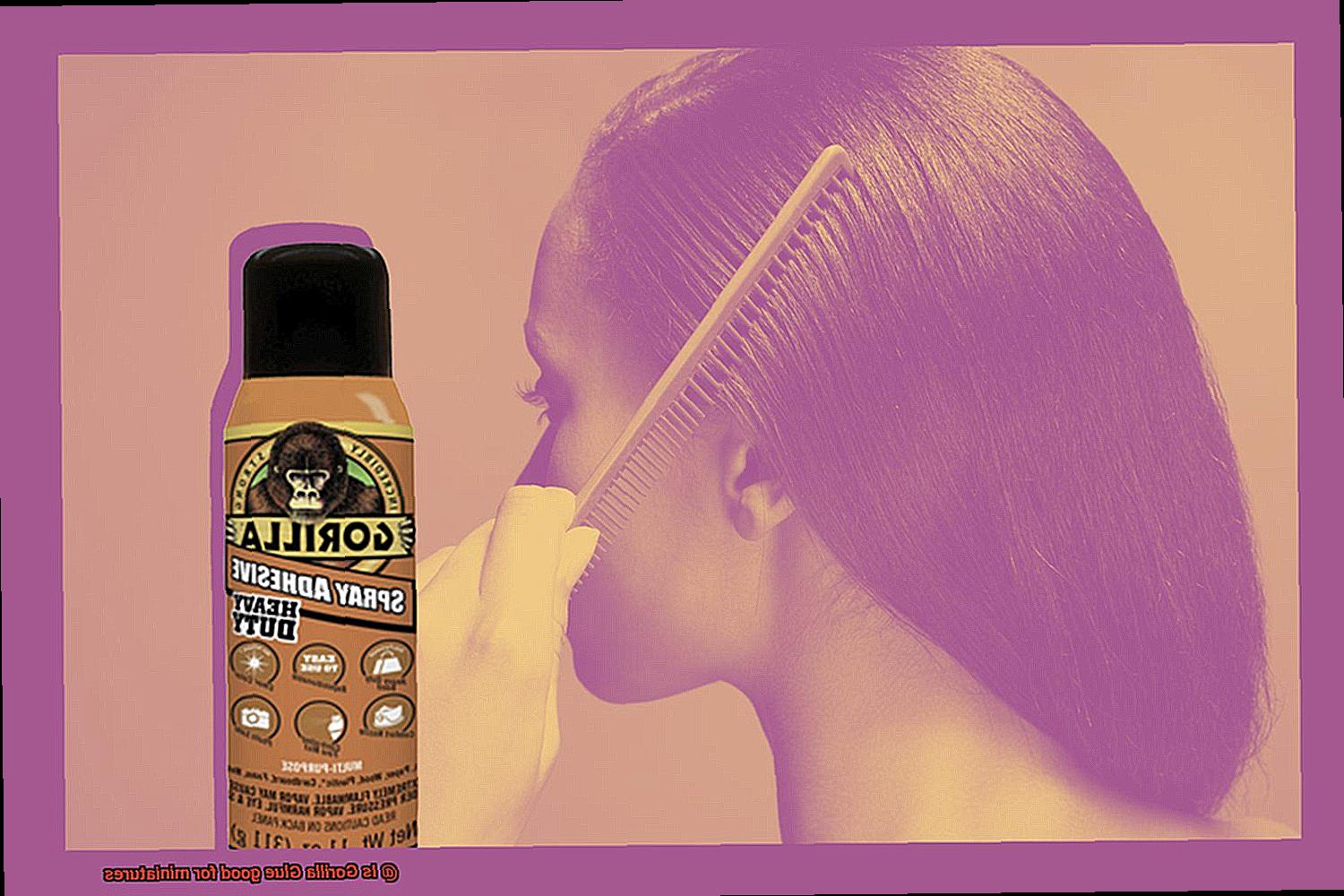
Furthermore, Gorilla Glue’s adhesive strength is remarkable. It allows miniatures to withstand significant stress without breaking or detaching. This is crucial for miniatures that may be subject to regular handling, transport, or even gaming sessions. The strong bond created by Gorilla Glue ensures that the delicate parts of miniatures stay securely in place, even under pressure.
Another advantage of Gorilla Glue is its relatively fast curing time compared to other adhesives. Within 1-2 hours of application, the glue sets, allowing hobbyists to continue working on their projects without long waiting times. This is especially beneficial for those with limited time or who need to complete projects within a specific timeframe.
Additionally, Gorilla Glue has an extended shelf life when properly stored, lasting for years without losing its adhesive properties. This is advantageous for hobbyists who may work on miniatures sporadically or have a large collection that requires occasional repairs or touch-ups. The glue remains effective and ready to use whenever needed.
While Gorilla Glue offers numerous benefits, it’s important to consider its potential limitations. Its expansion properties may cause bulges and gaps, potentially damaging delicate materials like foam. Additionally, its yellowish color and strong bond may make it challenging to hide or modify glue lines, limiting the ability to create stunning and customizable miniatures in the long run. Therefore, it’s essential to consider these factors when deciding whether Gorilla Glue is the right choice for your specific miniature project.
Alternatives to Gorilla Glue for Miniature Crafting
When it comes to miniature crafting, there are several alternatives to Gorilla Glue that can be used depending on the specific needs of your project. Here are some options to consider:
- Super Glue: Super glue, also known as cyanoacrylate adhesive, is a popular choice for miniature crafting. Its strong and fast-drying formula makes it ideal for bonding small parts together, particularly delicate or small components.
- E6000 Adhesive: E6000 is a versatile adhesive commonly used in crafting and jewelry-making industries. With its strong bond, it can adhere various materials such as plastics, metals, and fabrics. This makes it suitable for miniature crafting projects involving different materials.
- Plastic Cement: If your miniatures are made of plastic or resin, plastic cement can be an excellent alternative to Gorilla Glue. Specifically designed for bonding plastic parts, it creates a strong and durable connection by melting the plastic surfaces and fusing them together seamlessly.
- Double-Sided Tape or Adhesive Sheets: For temporary or semi-permanent bonds, you can consider using double-sided tape or adhesive sheets. These convenient alternatives provide a secure hold without leaving any residue or causing damage. They work well for attaching lightweight components or embellishments to miniatures.
- Hot Glue Gun: Some miniature crafters prefer using hot glue guns as an alternative to Gorilla Glue. They offer a quick and secure bond, making them ideal for attaching larger or heavier pieces to miniatures. However, it’s important to note that hot glue may not be suitable for all materials as it can melt certain plastics or cause damage to delicate surfaces.
Final Considerations
In the final considerations section of this article, it is crucial to recap the key points discussed and provide some concluding thoughts on the suitability of Gorilla Glue for miniature projects.
First and foremost, it is important to note that Gorilla Glue is a formidable adhesive that forges an unyielding bond. While this characteristic can be advantageous for certain applications, it may not be the most ideal choice for miniatures. Miniature hobbyists often prioritize flexibility and ease of modification, qualities that might not be achievable when using Gorilla Glue’s potent grip.
Moreover, Gorilla Glue exhibits expansion properties upon curing. This expansion can result in unsightly gaps or bulges in delicate miniature pieces, compromising their aesthetic appeal. Additionally, excess glue residue may accumulate during the curing process, necessitating careful removal to preserve the model’s visual allure. For those who strive for immaculate and precise miniature assembly, Gorilla Glue may not present itself as the most suitable option.
Furthermore, it is worth noting that Gorilla Glue is notorious for its foaming tendencies. The foam can inadvertently seep out from the glued area, potentially causing damage or distortions to intricate details on the model. Therefore, exercising caution when applying Gorilla Glue becomes paramount in order to prevent any unwelcome foam spillage that could mar the overall appearance of the miniature.
Lastly, it is essential to acknowledge that there are specialized glues available in the market specifically formulated for miniature modeling purposes. These glues offer distinct advantages such as precision applicators, rapid drying formulas, and a non-foaming nature. These features render them more suitable for intricate miniature work compared to general-purpose adhesives like Gorilla Glue.
8Y_Qq7PQWD8″ >
Conclusion
In conclusion, Gorilla Glue is indeed a fantastic option for miniatures.
Its strong adhesive properties ensure that your delicate figurines and models will stay securely in place. Whether you’re assembling tiny pieces or repairing broken parts, Gorilla Glue provides the durability and reliability you need.
Its versatility allows it to bond various materials commonly used in miniature crafting, such as plastic, metal, and even resin. Additionally, its quick-drying formula means less waiting time and more time spent enjoying your finished creations.
So, if you’re looking for a glue that can handle the intricate demands of miniature work, Gorilla Glue is definitely worth considering.


